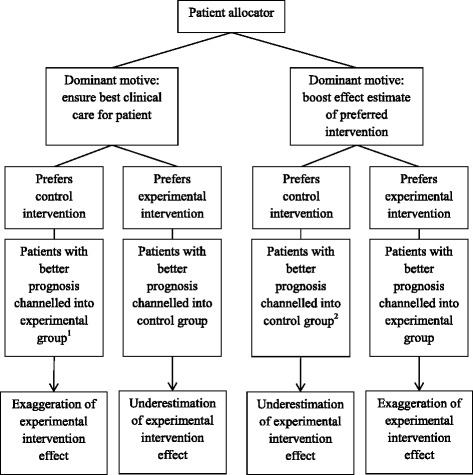Fig. 1.

The preference-motive interaction hypothesis for direction of allocation bias in randomised clinical trials. 1If dominant motive is best care for patient, we expect patient allocator to channel patients with the worst prognosis into his/her preferred group, as these patients need the most effective treatment the most; 2If the dominant motive is to boost the effect estimate of the preferred intervention, we expect patient allocator to channel patients with better prognosis into preferred group, so the intervention will look more effective
